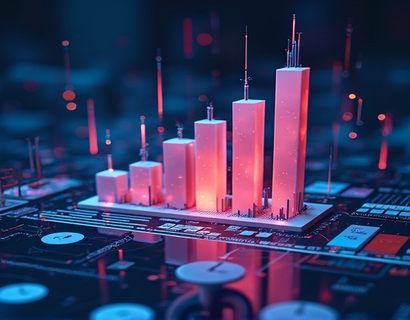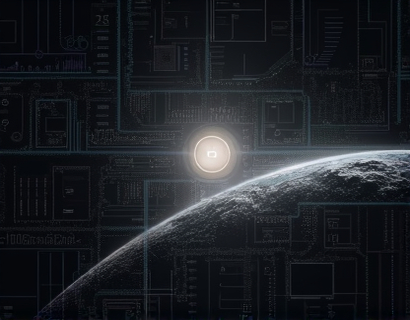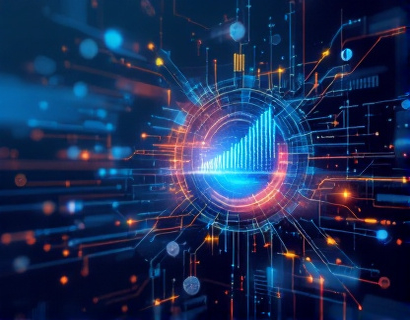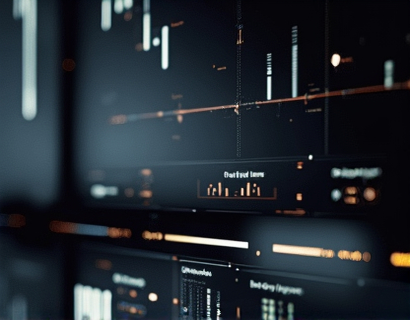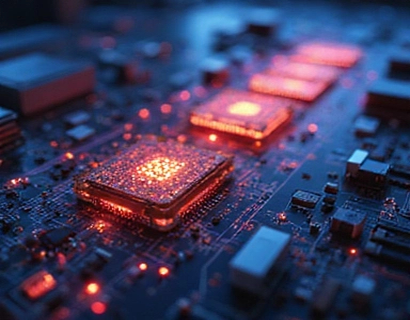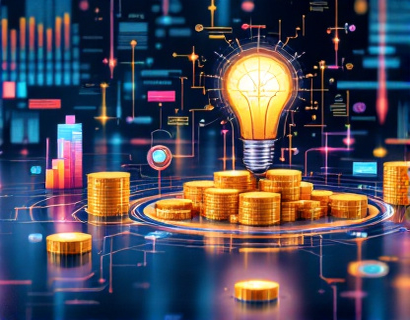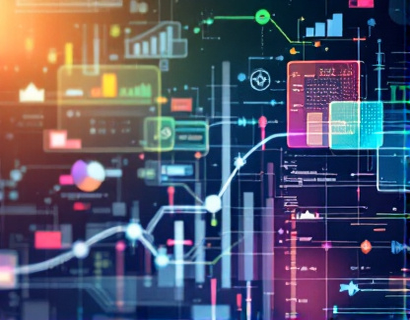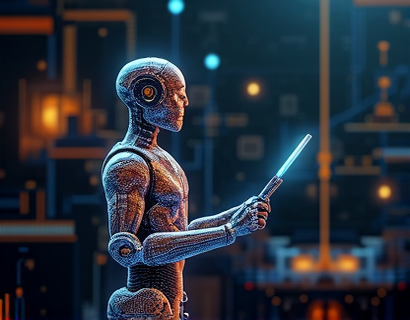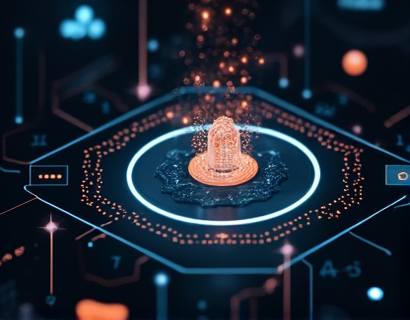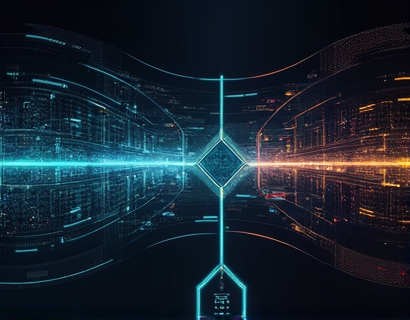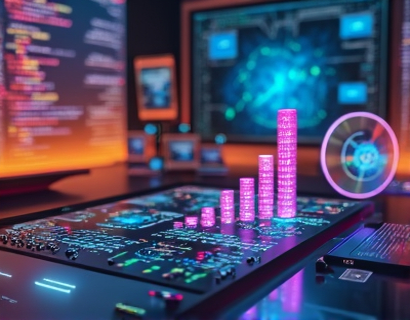Decentralized Innovation Platform: Revolutionizing Global Blockchain Collaboration and Governance for Enhanced Ecosystems
The advent of blockchain technology has ushered in a new era of decentralized networks, offering unprecedented levels of transparency, security, and efficiency. However, the true potential of blockchain is only realized when these networks operate in harmony, leveraging collective intelligence and resources. A transformative platform is emerging, designed to revolutionize decentralized network operations through enhanced collaboration, innovation, and governance. This platform is poised to become a cornerstone for blockchain enthusiasts and innovators, driving global ecosystem efficiency and scalability.
The core mission of this platform is to empower users to connect, share resources, and actively participate in decision-making processes. By fostering a thriving ecosystem, it aims to enhance the efficiency and scalability of distributed networks worldwide. This comprehensive resource will delve into the various aspects of this platform, exploring how it is reshaping the landscape of blockchain technology and decentralized collaboration.
Enhanced Collaboration
One of the most significant challenges in the blockchain space is the fragmentation of efforts and resources. Traditional blockchain projects often operate in silos, limiting the potential for synergy and collective advancement. The new platform addresses this issue by providing a unified space where developers, researchers, and enthusiasts can collaborate seamlessly. Through integrated tools and interfaces, users can easily share knowledge, code, and best practices, breaking down barriers and fostering a culture of open innovation.
The platform features a robust project management system that allows teams to coordinate efforts, assign tasks, and track progress in real-time. This ensures that projects stay on course and that resources are utilized efficiently. Additionally, the platform supports multi-language support and cross-platform compatibility, making it accessible to a global audience and encouraging diverse participation.
Innovation Hub
Innovation is the lifeblood of the blockchain ecosystem, and this platform is designed to be a hotbed of creative thinking and technological advancement. It provides a dedicated space for developers to experiment with new ideas, prototypes, and proof-of-concepts. The platform includes a series of incubators and accelerators that offer mentorship, funding, and resources to promising projects, helping them scale and succeed.
A key feature of the innovation hub is the community-driven research and development (R&D) program. This program encourages users to propose and collaborate on cutting-edge research projects, with a focus on solving real-world problems and pushing the boundaries of blockchain technology. The platform also hosts regular hackathons and challenges, bringing together top talent to tackle specific challenges and develop innovative solutions.
Decentralized Governance
Effective governance is crucial for the sustainability and success of decentralized networks. The platform introduces a novel approach to governance, leveraging blockchain's inherent transparency and immutability to create a fair and inclusive decision-making process. Through a decentralized autonomous organization (DAO) model, users have a direct say in the direction and development of the platform and associated projects.
The governance system is built on a token-based mechanism, where users earn tokens by contributing to the ecosystem through various activities such as developing projects, participating in discussions, and providing valuable feedback. These tokens grant voting rights, allowing users to propose and vote on critical decisions, from protocol upgrades to community initiatives. This decentralized governance model ensures that power is distributed equitably, reducing the risk of centralization and enhancing trust among users.
Scalability and Efficiency
As blockchain networks grow, scalability becomes a paramount concern. The platform addresses this challenge by integrating advanced scalability solutions, such as sharding, sidechains, and layer 2 protocols. These technologies enable the network to handle a higher volume of transactions without compromising security or decentralization. By optimizing resource usage and reducing latency, the platform ensures smooth and efficient operations, even as the network expands.
Furthermore, the platform employs smart contracts and automated workflows to streamline processes and reduce manual intervention. This not only increases efficiency but also minimizes the potential for human error. The use of self-executing contracts ensures that agreements are enforced transparently and reliably, fostering trust and confidence among users.
Security and Trust
Security is a fundamental aspect of any blockchain platform, and this innovation platform prioritizes robust security measures to protect user data and assets. It employs state-of-the-art cryptographic techniques and regular security audits to identify and mitigate vulnerabilities. The decentralized nature of the platform, combined with a strong community oversight, further enhances its security posture.
Trust is built through transparency and accountability. All transactions, governance proposals, and project developments are recorded on the blockchain, providing an immutable and verifiable history. Users can audit these records at any time, ensuring that the platform operates as intended and that decisions are made in the best interest of the community.
Community and Ecosystem
The success of this platform hinges on a vibrant and engaged community. The platform fosters a welcoming environment where users from diverse backgrounds can collaborate, learn, and grow. It offers a range of educational resources, including tutorials, webinars, and documentation, to help users of all skill levels contribute effectively to the ecosystem.
To further strengthen the community, the platform hosts regular meetups, conferences, and online forums. These events provide opportunities for users to network, share insights, and build lasting relationships. By nurturing a strong community, the platform ensures a continuous flow of ideas and innovations, driving the ecosystem forward.
Future Prospects
The potential impact of this decentralized innovation platform is vast, with far-reaching implications for the blockchain industry and beyond. As more users and projects join the ecosystem, the platform will continue to evolve, incorporating new features and technologies to meet the growing demands of the community. The vision is to create a self-sustaining, globally interconnected network that serves as a model for decentralized collaboration and governance.
In the years to come, this platform could play a pivotal role in shaping the future of decentralized finance (DeFi), decentralized applications (dApps), and other blockchain-based initiatives. By providing a robust and inclusive framework for innovation, it has the potential to accelerate the adoption of blockchain technology across various industries, from finance and supply chain to healthcare and governance.
In conclusion, the decentralized innovation platform represents a significant leap forward in blockchain collaboration and governance. By enhancing collaboration, fostering innovation, and implementing decentralized governance, it sets a new standard for decentralized ecosystems. As the blockchain landscape continues to evolve, this platform stands as a beacon of hope and progress, empowering users to build a more connected, efficient, and secure future.







